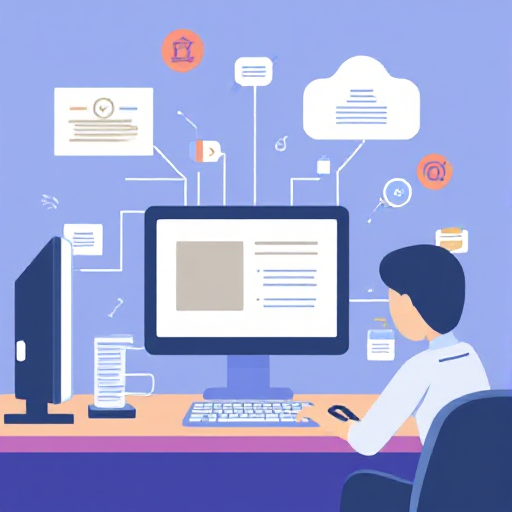
IT (Information Technology) skills have become essential for personal and professional growth. Whether you’re aiming to build a career in technology or simply enhance your skill set, diving into IT as a beginner can be a rewarding journey. This guide will outline actionable steps to help you start learning IT skills effectively.
1. Understand Why You Want to Learn IT
Before diving in, take time to identify your goals. Are you looking to:
- Build a career in tech (e.g., software development, IT support, cybersecurity)?
- Automate tasks and improve productivity?
- Understand technology to support your existing career?
- Create your own apps or websites?
Your goals will help shape your learning path and determine which skills to prioritize.
2. Explore Different IT Fields
IT is a broad domain, and understanding the various fields will help you focus on areas that interest you. Common IT fields include:
- Programming and Software Development: Writing code to create software, apps, or games.
- Web Development: Building websites and web applications.
- Data Science and Analytics: Extracting insights from data using tools like Python, R, and SQL.
- Networking and Systems Administration: Managing IT infrastructure and ensuring seamless communication between devices.
- Cybersecurity: Protecting systems and data from cyber threats.
- Cloud Computing: Working with services like AWS, Azure, and Google Cloud to manage and deploy applications.
- Artificial Intelligence (AI) and Machine Learning (ML): Creating systems that can learn and adapt.
3. Start with the Basics
If you’re new to IT, begin with foundational skills. These form the building blocks for advanced learning:
- Computer Literacy: Learn how to use operating systems (Windows, macOS, Linux) and basic applications like Microsoft Office or Google Workspace.
- Typing Skills: Practice touch typing to increase your efficiency.
- Understanding Hardware: Familiarize yourself with computer components and how they work together.
- Basic Networking: Learn concepts like IP addresses, DNS, and how the internet works.
4. Choose the Right Learning Resources
There are countless resources available online and offline to help you learn IT skills. Consider the following:
Online Courses
- Free Platforms: Khan Academy, freeCodeCamp, Codecademy (basic versions).
- Paid Platforms: Udemy, Coursera, edX, LinkedIn Learning.
Books and eBooks
- “Automate the Boring Stuff with Python” by Al Sweigart.
- “HTML and CSS: Design and Build Websites” by Jon Duckett.
- “The Linux Command Line” by William Shotts.
YouTube Channels
- CS50 by Harvard (Computer Science fundamentals).
- The Net Ninja (Web Development).
- Traversy Media (Programming and IT skills).
Communities and Forums
- Stack Overflow
- Reddit (e.g., r/learnprogramming, r/sysadmin)
- GitHub for project collaboration.
5. Learn by Doing
Theory alone isn’t enough in IT; hands-on practice is crucial. Here’s how to apply what you learn:
- Build Projects: Start small, such as creating a personal website, a simple app, or automating a task.
- Participate in Challenges: Join coding challenges on platforms like HackerRank, LeetCode, or Codewars.
- Experiment with Hardware: If you’re interested in networking or hardware, try setting up a home lab using old devices.
- Contribute to Open Source Projects: Explore GitHub repositories and contribute to projects.
6. Practice Consistently
Consistency is key to mastering IT skills. Dedicate regular time to learning and practicing. For example:
- Spend at least 30 minutes daily on learning new concepts.
- Allocate weekends for hands-on projects or deeper dives into complex topics.
- Use spaced repetition tools like Anki to retain technical terms and concepts.
7. Get Certified
Certifications can validate your skills and make you more attractive to employers. Consider starting with beginner-friendly certifications such as:
- CompTIA IT Fundamentals (ITF+): Great for understanding IT basics.
- Microsoft Azure Fundamentals: A good introduction to cloud computing.
- Google IT Support Professional Certificate: Covers essential IT support skills.
- Cisco’s CCNA: Ideal for networking beginners.
8. Stay Updated
Technology evolves rapidly, so staying current is crucial. Keep learning by:
- Reading blogs and news sites like TechCrunch, Wired, or Ars Technica.
- Following tech influencers on platforms like LinkedIn or Twitter.
- Attending webinars, conferences, and meetups.
- Joining local or online tech communities.
9. Seek Guidance and Mentorship
A mentor can accelerate your learning by providing advice and sharing experiences. To find mentors:
- Join professional networks like LinkedIn.
- Participate in online forums and local tech meetups.
- Engage in communities related to your chosen IT field.
10. Consider Formal Education
While not always necessary, formal education can provide structure and credibility:
- Enroll in a diploma, associate’s, or bachelor’s degree program in IT or Computer Science.
- Look for bootcamps that offer immersive, short-term courses with hands-on experience.
11. Embrace the Journey
Learning IT skills is a continuous process. Be patient, celebrate small victories, and don’t be afraid to make mistakes. Each challenge you overcome will bring you closer to mastering your skills.
Starting your IT journey as a beginner can feel overwhelming, but with a clear plan, consistent effort, and the right resources, you can achieve your goals. Whether you’re coding your first program, setting up a network, or analyzing data, remember that every expert was once a beginner. Take the first step today, and the possibilities are endless!






